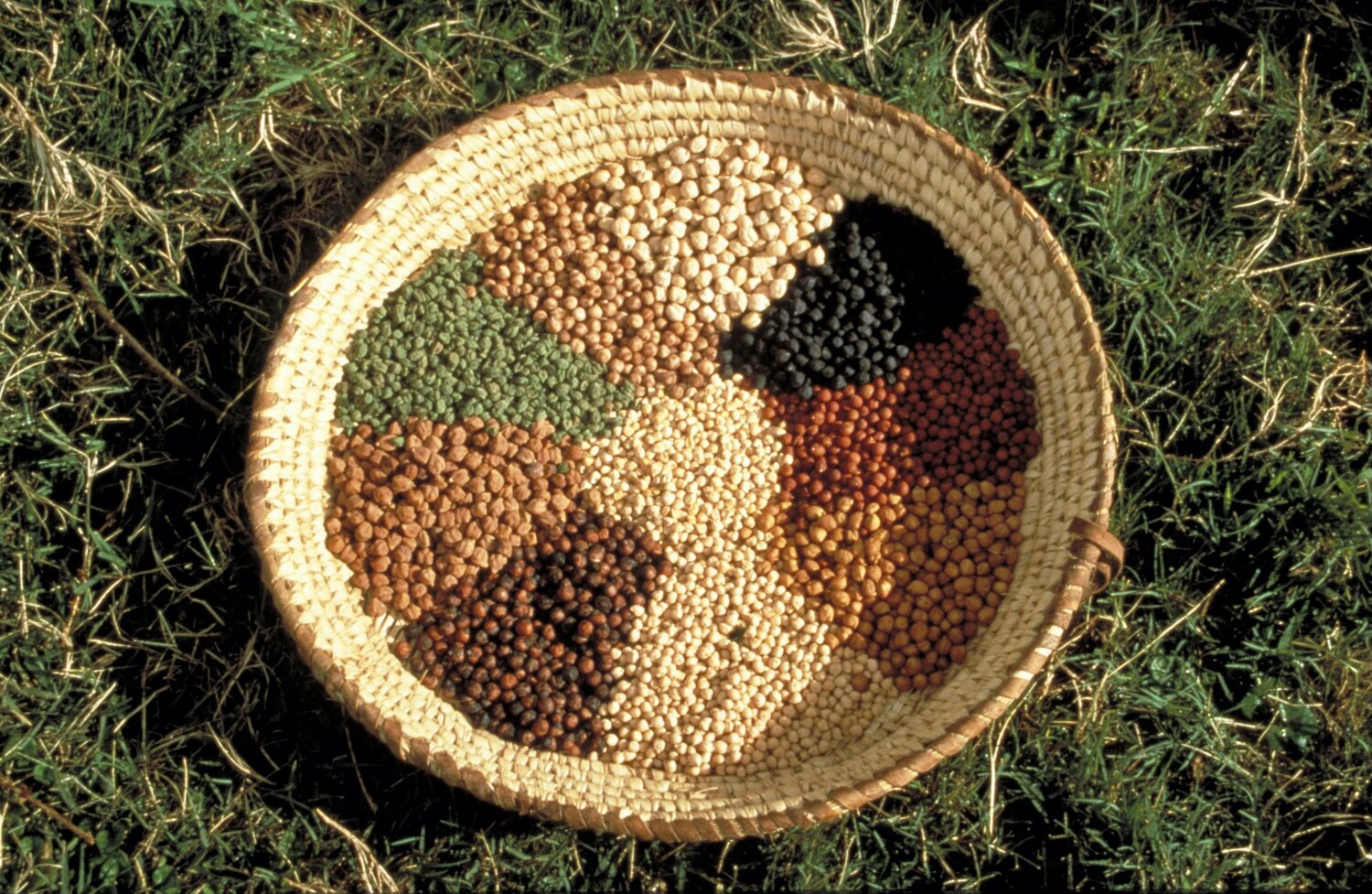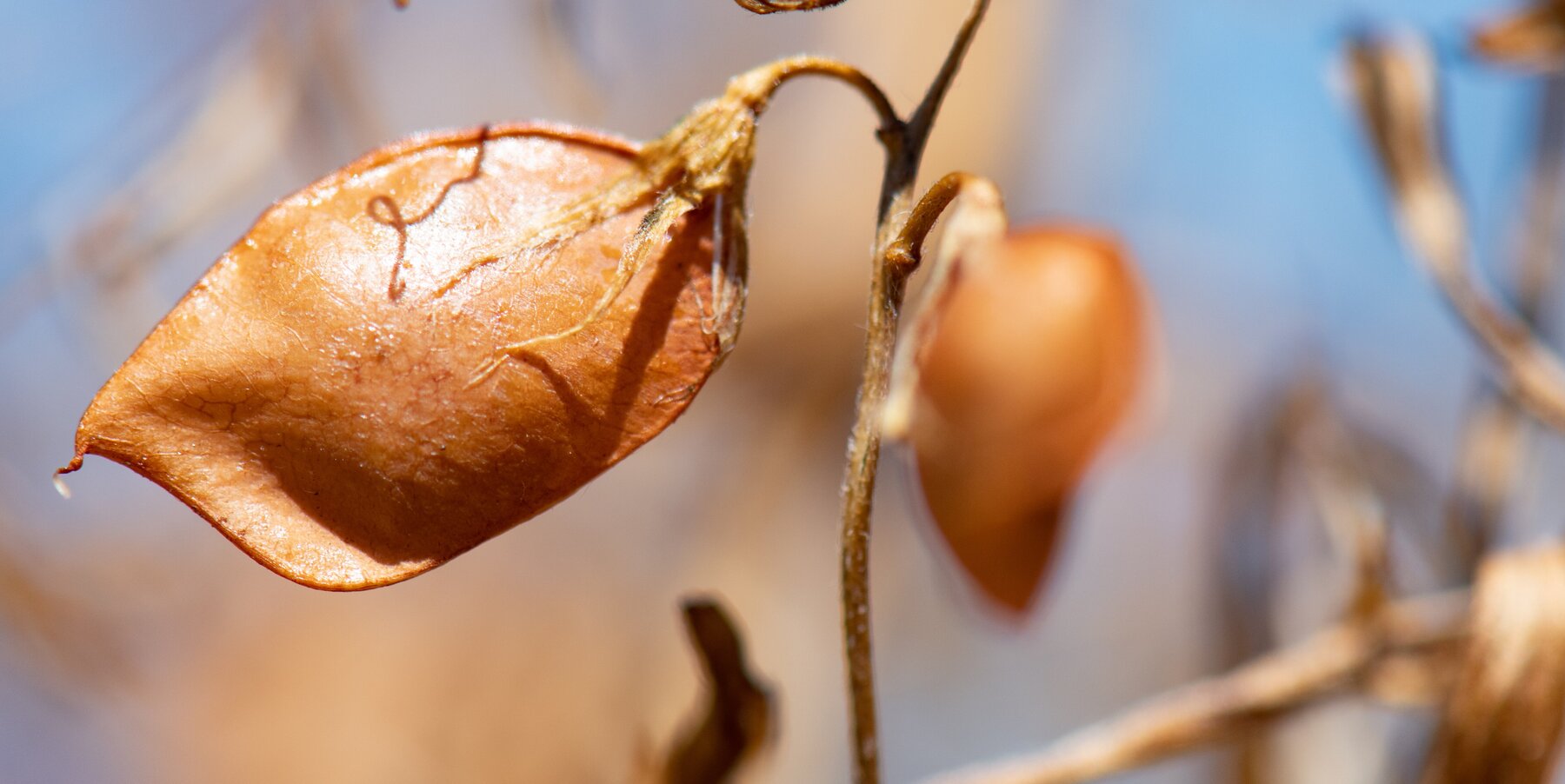Lentil
Why lentil?
Lentil (Lens culinaris Medik.) is the third most important cool-season pulse in the world after chickpea and pea, with nearly 6-7 million tonnes produced every year globally. It is mainly grown in Canada, India, Australia, Turkey, Nepal, the United States and Bangladesh. It is an important source of protein, fiber, iron, zinc, selenium and vitamins A and B. Lentil straw is used as fodder for small ruminants in the Middle East and North Africa.
What we achieved
Collecting
- 60 seed samples of four lentil wild relatives were collected in six countries: Cyprus, Ethiopia, Georgia, Lebanon, Pakistan and Spain.
Pre-breeding and evaluation
- Crosses were made between the lentil wild relative Lens orientalis and cultivated lentil, Lens culinaris aimed at developing lines with improved drought tolerance, earliness, high iron and zinc contents and tolerance to Orobanche and Stemphyllium blight.
- Six segregating populations of interspecific crosses with lentil crop wild relatives (CWR) included in the Lentil International Pre-Breeding Nursery to provide opportunity to partners in 22 countries to make selection under local environments.
- Seventeen CWR-derived elite lines were included in the Lentil International Screening Nursery for screening against major diseases and abiotic stresses in 22 partner countries.
- One CWR-derived pre-bred line is being tested by the Institut national de la recherche agronomique, Morocco, for evaluation for possible release to farmers in 2022.
- Twenty-four CWR-derived lines of lentil are conserved in the genebank of the International Center for Agricultural Research in the Dry Areas (ICARDA) and are available for sharing through the Standard Material Transfer Agreement (SMTA).
- Two varieties of lentil, Jammu Lentil 144 and Jammu Lentil 71, were developed using CWRs (Lens orientalis), and released by the Indian partner for cultivation in Jammu & Kashmir region in 2022.

Project partners
Collecting
- Agricultural Research Institute, Ministry of Agriculture, Natural Resources and Environment, Nicosia, Cyprus
- Ethiopian Biodiversity Institute, Addis Ababa, Ethiopia
- National Botanical Garden of Georgia, Tbilisi, Georgia
- Lebanon Agricultural Research Institute, Rayak, Lebanon
- Plant Genetic Resources Program, Bio-Resources Conservation Institute, Islamabad, Pakistan
- National Institute for Agricultural and Food Research and Technology, Madrid, Spain
Pre-breeding and evaluation
Lead Institute: University of Saskatchewan, Saskatoon, Canada (pre-breeding); ICARDA, Rabat, Morocco (pre-breeding and evaluation)
Partners:
- Bangladesh Agricultural Research Institute, Gazipur, Bangladesh
- Ethiopian Institute of Agricultural Research, Debre Zeit, Ethiopia
- Harran University, Şanlıurfa, Turkey
- Indian Council of Agricultural Research, New Delhi, India
- Institut national de la recherche agronomique, Rabat, Morocco
- Lebanon Agricultural Research Institute, Rayak, Lebanon
- Nepal Agriculture Research Council, Kathmandu, Nepal
- Institut sénégalais de recherche Agricole, Dakar, Senegal
- Institute for Sustainable Agriculture, Spain
- Universidad de Leon, Spain
Lentil key collections, materials and data
Lentil collections
-
The largest lentil collection is conserved at ICARDA, Morocco.
-
The Genesys PGR database also includes information about lentil accessions in genebanks worldwide
Pre-breeding materials
-
Twenty-four CWR-derived pre-bred lines are conserved in the ICARDA genebank in Morocco.
Data
-
Data from the CWR lentil pre-breeding project is available on request through the Knowpulse website at the University of Saskatchewan.
-
Data from the evaluation projects are available in the Germinate lentil database.
Lentil stories
Crop Trust stories
-
Wild Relatives: Not Just in Your Family. https://www.croptrust.org/news-events/news/wild-relatives-not-just-in-your-family/. 30 May 2019.
Partner stories
- Using wild relatives to toughen up staple crops. https://www.icarda.org/media/blog/using-wild-relatives-toughen-staple-crops. 18 April 2021.
Relevant publications
- Bett, K.E., Banniza, S., Tullu, S., Kemal, S., Yuan, H.Y., Chen, L., Kundu, S., Podder, R., Bucak, B., Biçer, T., Saha, S., De La Vega, M., Fratini, R., Rubiales, D., Kumar, S.A., Udupa, S., Sarker, A., McGee, R., Coyne, C., Ali, O., Vandenberg, A. 2015. Use of crop wild relatives in lentil breeding – sharing the benefits. In: De Ron, A.M. (ed.). Plant proteins for the future. Book of abstracts. Eucarpia International Symposium on Protein Crops – V Meeting AEL, Pontevedra (Spain), 4–7 May 2015. p. 46.
- Gorim, L.Y., Vandenberg, A. 2017. Evaluation of wild lentil species as genetic resources to improve drought tolerance in cultivated lentil. Frontiers in Plant Science 8: 1129. https://doi.org/10.3389/fpls.2017.01129.
- Gorim, L.Y., Vandenberg, A. 2017. Root traits, nodulation and root distribution in soil for five wild lentil species and Lens culinaris (Medik.) grown under well−watered conditions. Frontiers in Plant Science 8: 1632. https://doi.org/10.3389/fpls.2017.01632.
- Kundu, S.S., Podder, R., Bett, K.E., Schoenau, J.J., Vandenberg, A. 2017. Optimizing seed sample size for zinc and iron analysis of wild and cultivated lentil. Communications in Soil Science and Plant Analysis 48(13): 1584–1594.
- Gorim, L.Y., Rabani, E.M., Barlow, B., De Silva, D., Vandenberg, A. 2018. Are artificial media valid for root analysis? A case study comparing root traits of five lentil genotypes in artificial media versus soil. Journal of Soil Science and Plant Health 2: 1.
- Yuan, H.Y., Saha, S., Vandenberg, A., Bett, K.E. 2017. Flowering and growth responses of cultivated lentil and wild Lens germplasm towards the differences in red to far−red ratio and photosynthetically active radiation. Frontiers in Plant Science 8: 386. https://doi.org/10.3389/fpls.2017.00386.
- Chen, Li-An. 2018. Assessing impacts of crop-wild introgression in lentil using interspecific lens species recombinant inbred line populations. PhD thesis. University of Saskatchewan, Canada.
- Kundu, S.S. 2018. Zinc biofortification of lentil. MSc thesis. University of Saskatchewan, Canada.
- Mohsenzadeh Rabani, E. 2018. Effects of drought and growth media on lentil growth characteristics. MSc thesis. University of Saskatchewan, Canada.
- Podder, R. 2018. Iron biofortification and fortification of lentil (Lens culinaris Medik.). PhD thesis. University of Saskatchewan, Canada.
- Gorim, L., Vandenberg, A. 2019. Variation in total root length and root diameter of wild and cultivated lentil grown under drought and re-watered conditions. Plant Genetic Resources: Characterization and Utilization 17(1): 45-53.
- Coyne, C.J., Kumar, S., von Wettberg, E.J.B., Marques, E., Berger, J.D., Redden, R.J., Ellis, T.H.N., Brus, J., Zablatzká, L., Smýkal, P. 2020. Potential and limits of exploitation of crop wild relatives for pea, lentil, and chickpea improvement. Legume Science 2(2): e36. https://doi.org/1 0.1002/leg3.36.
- Pratap, A., Das, A., Kumar, S., Gupta, S. 2021. Current perspectives on wild gene introgression breeding in food legumes. Frontiers in Plant Science 11:589189. https:// https://doi.org/10.3389/fpls.2020.589189.
- El Haddad, N., Sanchez-Garcia, M., Visioni, A., Jilal, A., El Amil, R., Sall, A.T., Lagesse, W., Kumar, S. and Bassi, F.M. 2021. Crop wild relatives crosses: multi-location assessment in durum wheat, barley, and lentil. Agronomy: 11(11), p.2283. https://doi.org/10.3390/agronomy11112283.

